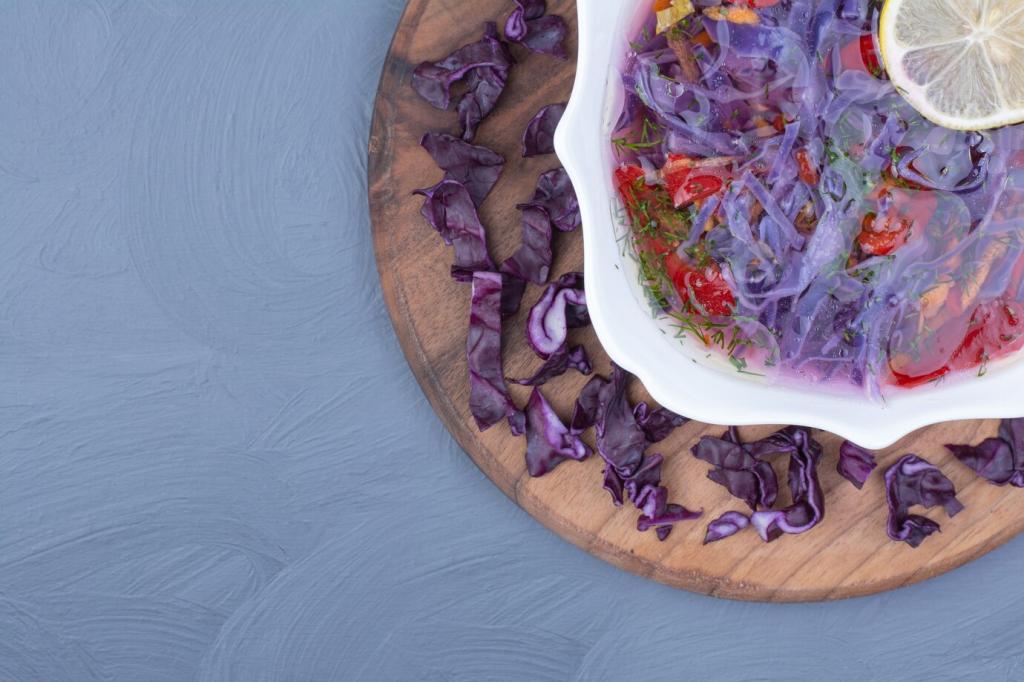
Mastering Fermentation Techniques for Home Chefs
Fermentation has transformed from an ancient preservation method to a vibrant culinary trend embraced by home chefs seeking flavor, health benefits, and creative satisfaction. Mastering fermentation techniques unlocks an exciting world of possibilities, enabling you to craft tangy vegetables, fizzing beverages, and probiotic-rich dairy in your own kitchen. This guide is designed to demystify the process, build your confidence, and spark inspiration. No matter your experience level, you’ll discover expert insights on safe practices, essential tools, and inventive recipes. Dive into the art and science of fermentation and elevate your cooking skills to a new level.
The Science Behind Fermentation
Microbial Magic in Your Kitchen
At its core, fermentation occurs when beneficial bacteria, yeasts, or molds consume the sugars and carbohydrates present in food, producing acids, alcohol, and gases as byproducts. This transformation creates not only signature flavors and textures but also preserves food and often enhances its nutritional value. Understanding how different microorganisms work—such as Lactobacillus for pickles and yogurt or Saccharomyces for bread and beer—sets the foundation for navigating processes with confidence. The unique symbiosis of these microbes with their environment explains why small changes in temperature, salt, or time can dramatically affect your finished product.
Factors That Influence Fermentation Success
To consistently achieve great results, it’s crucial to recognize what affects fermentation. Temperature, humidity, salt concentration, and the cleanliness of your equipment all interact to encourage or inhibit microbial activity. Warmer climates typically speed up fermentation, while cooler temperatures slow it down, offering a way to control the final outcome. The right balance of salt wards off harmful bacteria yet allows beneficial organisms to thrive. Each factor in this biological equation plays an important role and learning how to monitor and adjust them is key to mastering fermentation at home.
Nutritional and Health Benefits
Home-fermented foods aren’t just flavorful—they’re teeming with probiotics and enzymes beneficial to digestion and overall wellness. Fermentation can increase the availability of vitamins and minerals, producing foods that are more nutritious than their raw counterparts. Probiotic strains, like those found in kimchi, sauerkraut, and kefir, may support gut health and bolster immunity. By making your own fermented foods, you not only control the ingredients but also reap the daily benefits of these living, health-promoting organisms.
Essential Tools and Ingredients

Choosing the Right Equipment
Fermentation projects can be as simple or sophisticated as you choose, but a few well-chosen tools make the process smoother. Mason jars, fermentation weights, and airlock lids offer convenience and help maintain a stable, contamination-free environment for your ferments. Larger batches may benefit from dedicated crocks or food-grade buckets. Accurate thermometers and digital scales support recipes that require precision, such as sourdough starter or miso paste. Selecting quality, non-reactive materials—such as glass, ceramic, or stainless steel—prevents unwanted flavors or chemical reactions.

Selecting Quality Ingredients
The final flavor and texture of your fermented foods depend on the quality of your starting ingredients. Organic and fresh produce typically harbor more beneficial bacteria and fewer pesticides that could hinder fermentation. For salt, choose non-iodized and additive-free varieties, as anti-caking agents can interfere with microbiological activity. Proteins, dairy, or grains should be as pure and unprocessed as possible. Even the water you use matters; filtered or dechlorinated water is best since chlorine can inhibit microbial growth.

Maintaining Cleanliness and Safety
Proper hygiene cannot be overstated when fermenting at home. Ensuring that containers, utensils, and hands are thoroughly clean reduces the risk of contamination by harmful bacteria or mold. While fermentation naturally creates a hostile environment for pathogens, starting with scrupulously sanitized equipment gives your beneficial microbes the best chance to dominate. Learning to recognize signs of spoilage, such as off odors, growths, or unusual textures, helps you confidently and safely enjoy the fruits of your labor.
Lacto-fermentation is one of the simplest and most versatile methods for home chefs. This technique harnesses lactic acid bacteria naturally present on food surfaces or in brines. Simply combine vegetables with salt—or occasionally starter cultures—to cultivate a crunchy, tangy, and probiotic-rich result. Sauerkraut, kimchi, and pickles are made using lacto-fermentation. The process is low-tech, requiring only vegetables, salt, and time, but understanding ratios and conditions allows you to customize flavor and texture. Once you’ve grasped the basics, you can experiment with spice blends and a variety of produce for year-round fermentation fun.

